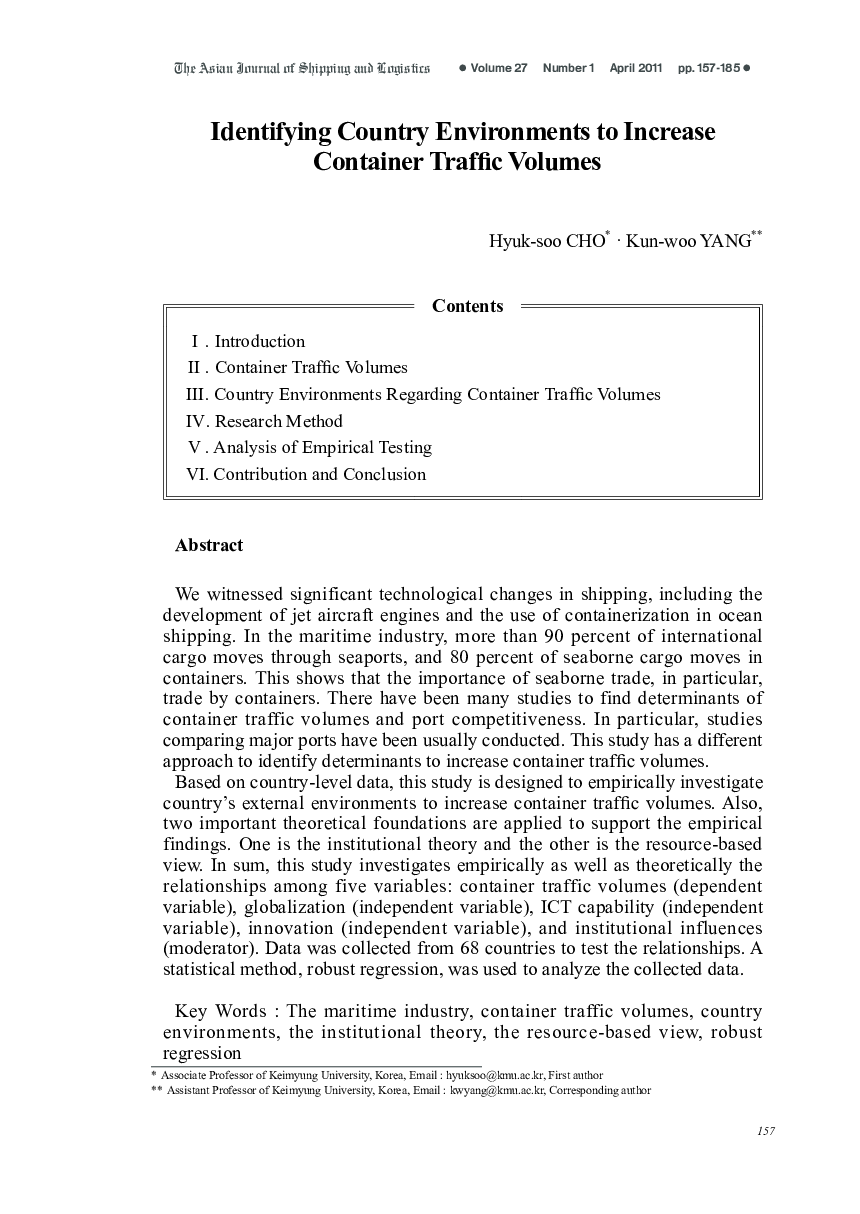| Article ID | Journal | Published Year | Pages | File Type |
|---|---|---|---|---|
| 994160 | The Asian Journal of Shipping and Logistics | 2011 | 29 Pages |
We witnessed significant technological changes in shipping, including the development of jet aircraft engines and the use of containerization in ocean shipping. In the maritime industry, more than 90 percent of international cargo moves through seaports, and 80 percent of seaborne cargo moves in containers. This shows that the importance of seaborne trade, in particular, trade by containers. There have been many studies to find determinants of container traffic volumes and port competitiveness. In particular, studies comparing major ports have been usually conducted. This study has a different approach to identify determinants to increase container traffic volumes.Based on country-level data, this study is designed to empirically investigate country's external environments to increase container traffic volumes. Also, two important theoretical foundations are applied to support the empirical findings. One is the institutional theory and the other is the resource-based view. In sum, this study investigates empirically as well as theoretically the relationships among five variables: container traffic volumes (dependent variable), globalization (independent variable), ICT capability (independent variable), innovation (independent variable), and institutional influences (moderator). Data was collected from 68 countries to test the relationships. A statistical method, robust regression, was used to analyze the collected data.
